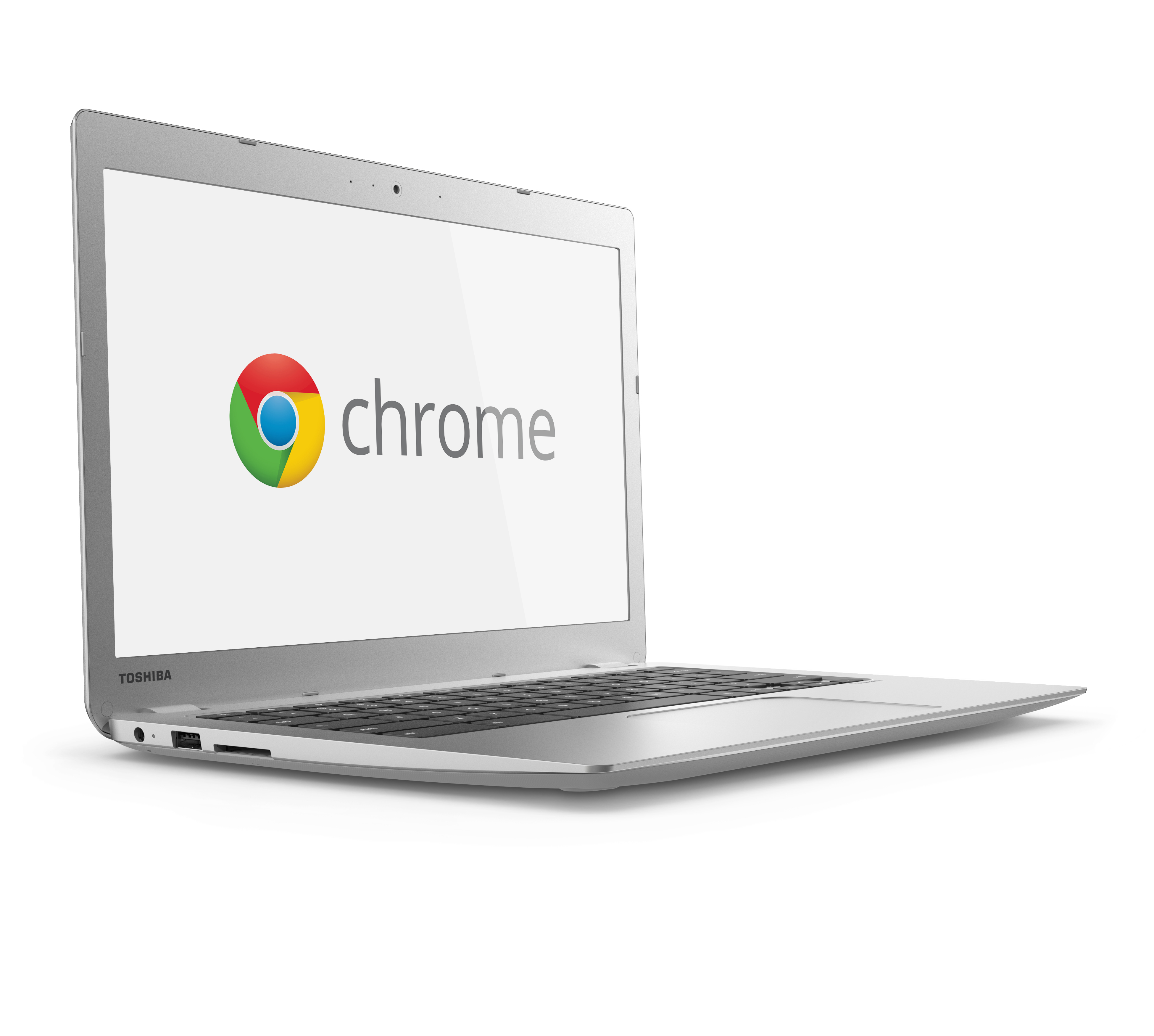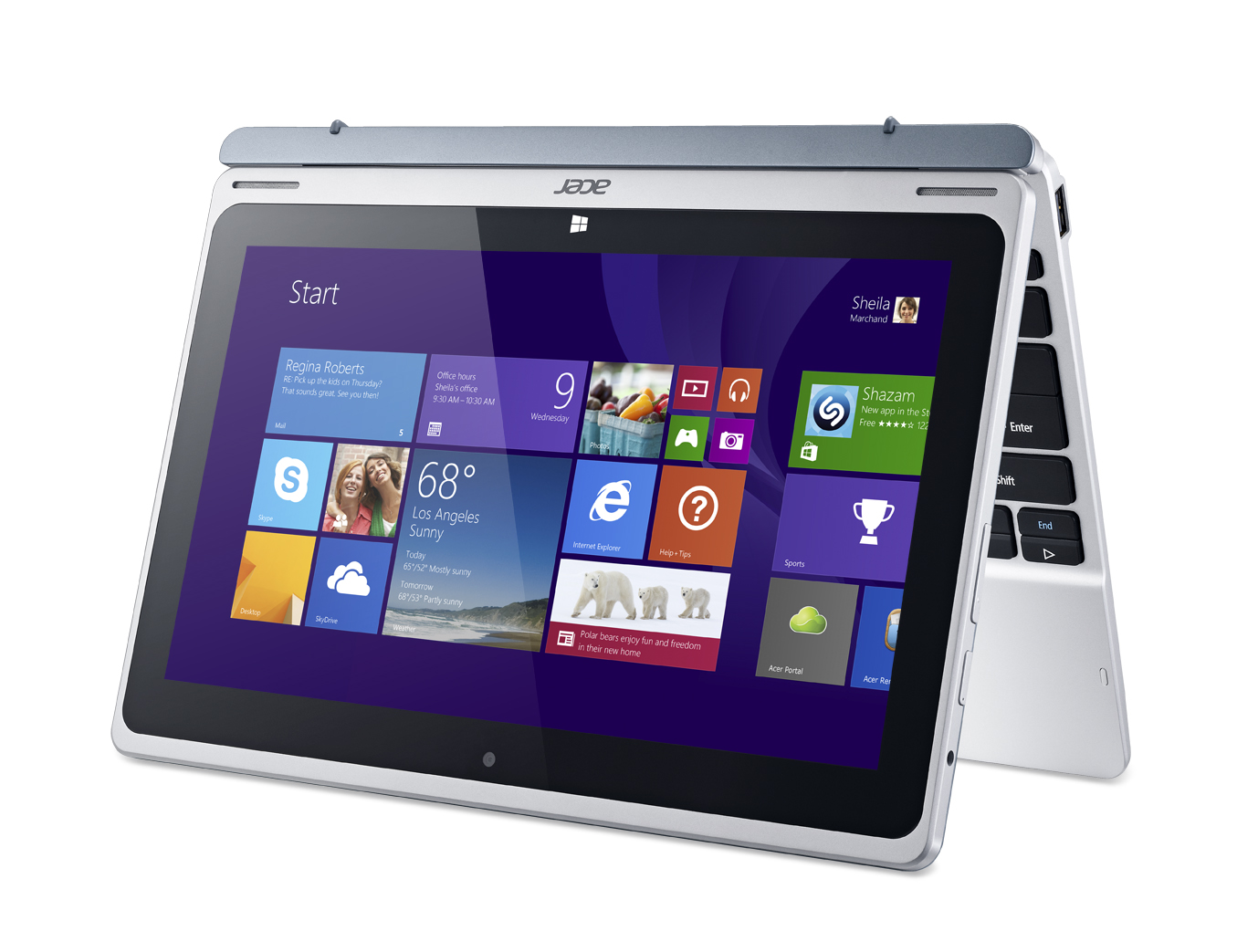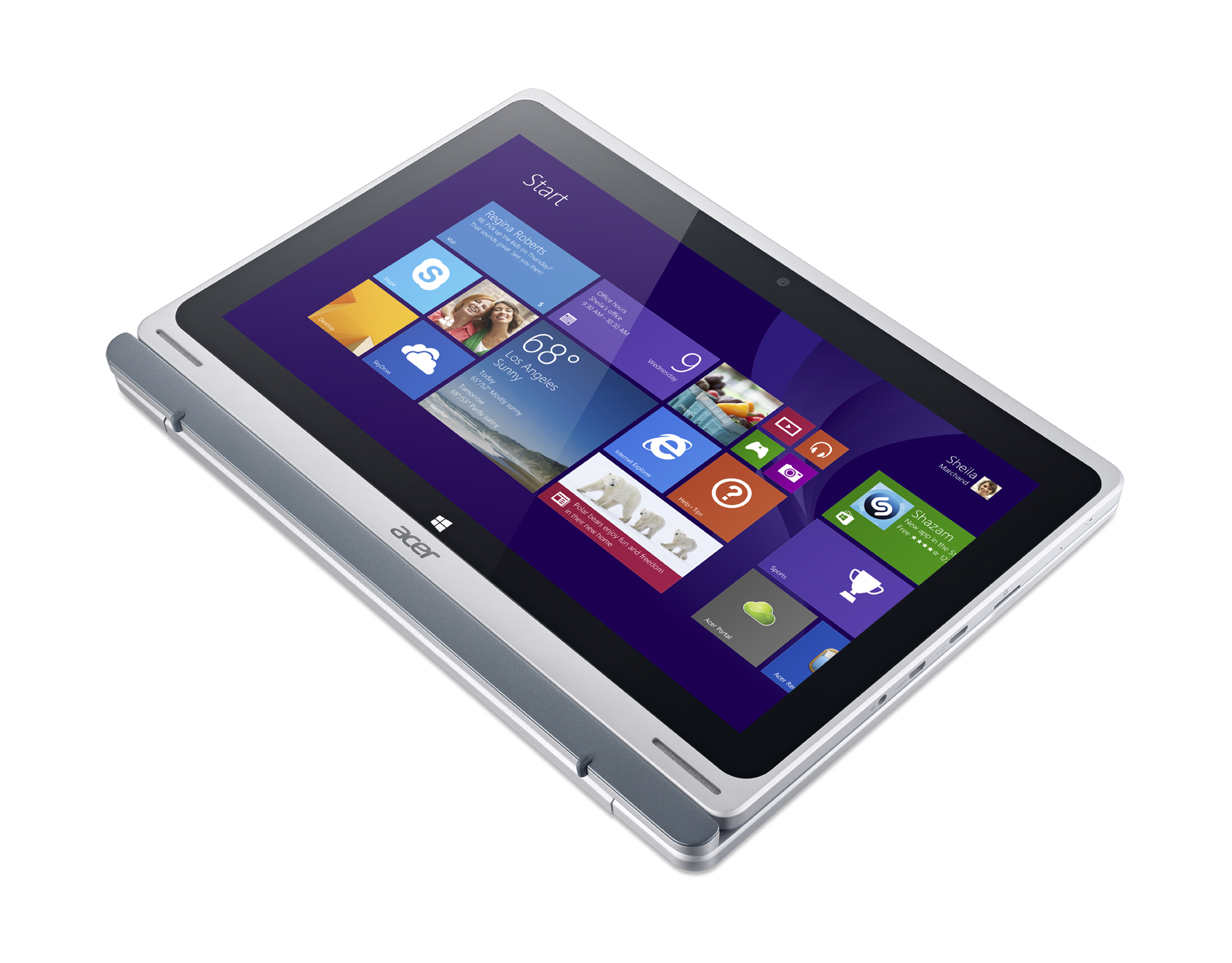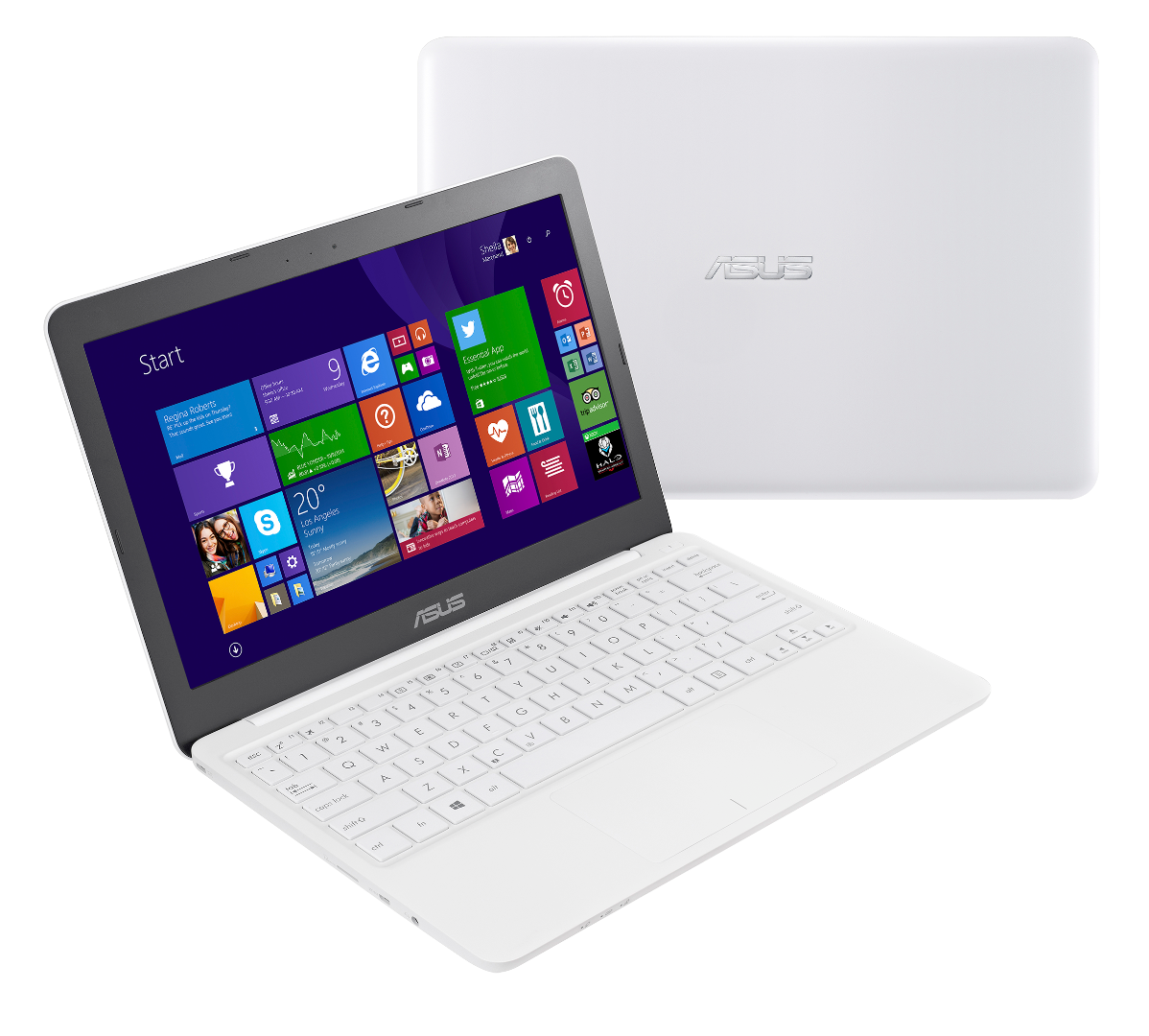ASUS Outs $200 Windows 8.1 Notebook; Acer And Toshiba Intro Inexpensive Laptops, Too
We knew the onslaught of refreshed Chromebooks and similarly inexpensive Windows laptops was coming, and that's as clear as glass today as multiple companies have announced devices that will all compete in the shallow end of the price pool.
Toshiba Chromebook 2

Toshiba is releasing two versions of the Chromebook 2, with the primary difference between them being the display; the cheaper $249.99 version offers 1366 x 768 resolution (which may leave a little something to be desired on this 13.3-inch device) while the higher-res 1920 x 1080 version will cost up to $329.99.
Toshiba opted for a dual-core Intel Celeron N2840 (2.16/2.58 GHz) for both SKUs. The less expensive model offers 2 GB of DDR3L-1600MHz RAM while the other has 4 GB of RAM, and both offer a 16 GB SSD (with 100 GB of Google Drive storage free for a year).
Both Toshiba Chromebook 2s also feature Intel Dual-Band Wireless-AC 7260 and Bluetooth 4.0 connectivity, an HD webcam, SD card reader (including support for up to a 2 TB SDXC card), HDMI, USB 3.0, USB 2.0 and a security slot. There's also a mic/headphone combo jack and Skullcandy-branded stereo speakers.
Acer Aspire Switch 10 and 11
Acer has already outed a couple of its new Chromebook SKUs, but as promised, the company is also coming out with more lower-end Windows machines. The two hitting the wire today are the (upgraded) Aspire Switch 10 and the new Aspire Switch 11, and what's most intriguing about them is the fact that although they sport multimode use (tent mode, tablet mode, the ability to detach the tablet display from the keyboard, etc.) but at a low cost; the Switch 10 and 11 will only run you $330 and $400, respectively.


The Switch 10 update (SW5-012) offers a 10-inch Corning Gorilla Glass 3 display at resolutions of either 1920 x 1200 or 1280 x 800, and a quad-core Intel Atom chip powers the units. The Switch 10 has 2 GB of RAM, 32 GB or 64 GB of onboard storage and a 1080p HD webcam. Windows 8.1 with Office 365 Personal come pre-loaded.
Acer is adding to its Switch family with slightly larger 11.6-inch Switch 11 models. The SW5-171 SKU offers Full HD display while the less expensive SW5-111 SKU sports a 1366 x 768 display resolution. However, the difference by no means ends there.
Get Tom's Hardware's best news and in-depth reviews, straight to your inbox.
The higher-res version rocks an Intel Core i5 (Haswell) chip and has 4 GB of RAM and a 128 GB SSD, and USB 3.0 and USB 2.0 ports provide connectivity for peripherals. (If those specs sound substantially not low end, you'd be right -- this machine starts at $599, but we've included it here for reference.)

The SW5-171's sibling, the SW5-111, is actually more of the budget machine here. It has a quad-core Intel Atom Z3745 processor with 2 GB of RAM and 64 GB eMMC flash storage. There are also two USB 2.0 ports, one full-sized and one micro, as well as a 1080p HD webcam.
Both Switch 11 models have 802.11a/b/g/n WiFi, Bluetooth 4.0, micro HDMI and MicroSD slots, and they ship with Windows 8.1 installed. Pricing starts at $399, which is a little high compared to most Chromebooks -- but not by much.
ASUS EeeBook X205
Another entrant in the economical lappie race is ASUS, which debuted perhaps the most intriguing device of the group: a Windows 8.1 notebook that costs a piddly $200.
The 11.6-inch (1366 x 768) EeeBook X205 sports a quad-core Intel Atom chip (1.33 / 1.83 GHz) with 2 GB of RAM, and for connectivity there's 802.11a/b/g/n dual-band WiFi, Bluetooth 4.0, two USB 2.0 ports, micro HDMI out, a headphone/mic combo jack and a webcam. ASUS promises up to 12 hours of battery life under modest use.

The storage situation is multifaceted; in addition to 32 or 64 GB of onboard eMMC flash storage, you can get up to 115 GB of OneDrive storage free for a year, a whopping 500 GB of ASUS WebStorage free for two years, and you can add another 64 GB of storage via the MicroSD card slot.
ASUS managed to subsidize the cost of this incredibly low-price device by loading it with the Bing version of Windows 8.1. "Windows 8.1 with Bing" is a special version of Microsoft's latest OS that the company developed to allow OEMs to produce lower-cost devices, and it features Bing as the default search engine within Internet Explorer.
The trick certainly seems to be working, as a $200 Windows 8.1 laptop is a coup for Microsoft against the Chromebook invasion -- that is, if performance is up to snuff.
These are by no means the last budget PC notebooks and Chromebooks we'll be seeing in the near future. This could get interesting.
Follow Seth Colaner@SethColaner. Follow us @tomshardware, on Facebook and on Google+.
-
TheMentalist The ASUS one is good for a web developer, doesn't need much and it's light and small. Good for bringing it from place to place.Reply -
TechyInAZ Nice! There is nothing I like more than a cheap computer that I can run all my computer programs on.Reply -
TechyInAZ Nice! There is nothing I like more than a cheap computer that I can run all my computer programs on.Reply -
SteelCity1981 I mean for 249 starting price, that's a pretty good deal for everyday users that don't game or do any video editing. plus the low power draw from the cpu should yield really good battery life.Reply -
boytitan2 Sure they are cheap but the 200-300 dollar laptops are using the same atom cpu found in 100-200 dollar android/windows tablets no thanks. I will just save up and find a 550 dollar laptop on sale and use my atom powered tablet and amd fx destop p.c. for now.Especially since once cherry trail comes out these things will be useless.Reply -
ldo The era of Landfill Windows is here: literally throwaway devices that Microsoft is hawking in a desperate bid to buy market share.Reply
Of course it won’t last. -
TerryFawkes given most of these intel core designs do NOT have generic AVX2 SIMD + Intel Quick Sync in 2014/15 (and so any NEON optimised cortex and included hardware assisted encoding HW can beat them) then why would we care to buy these obsolete before you take them off the shelf products today...Reply